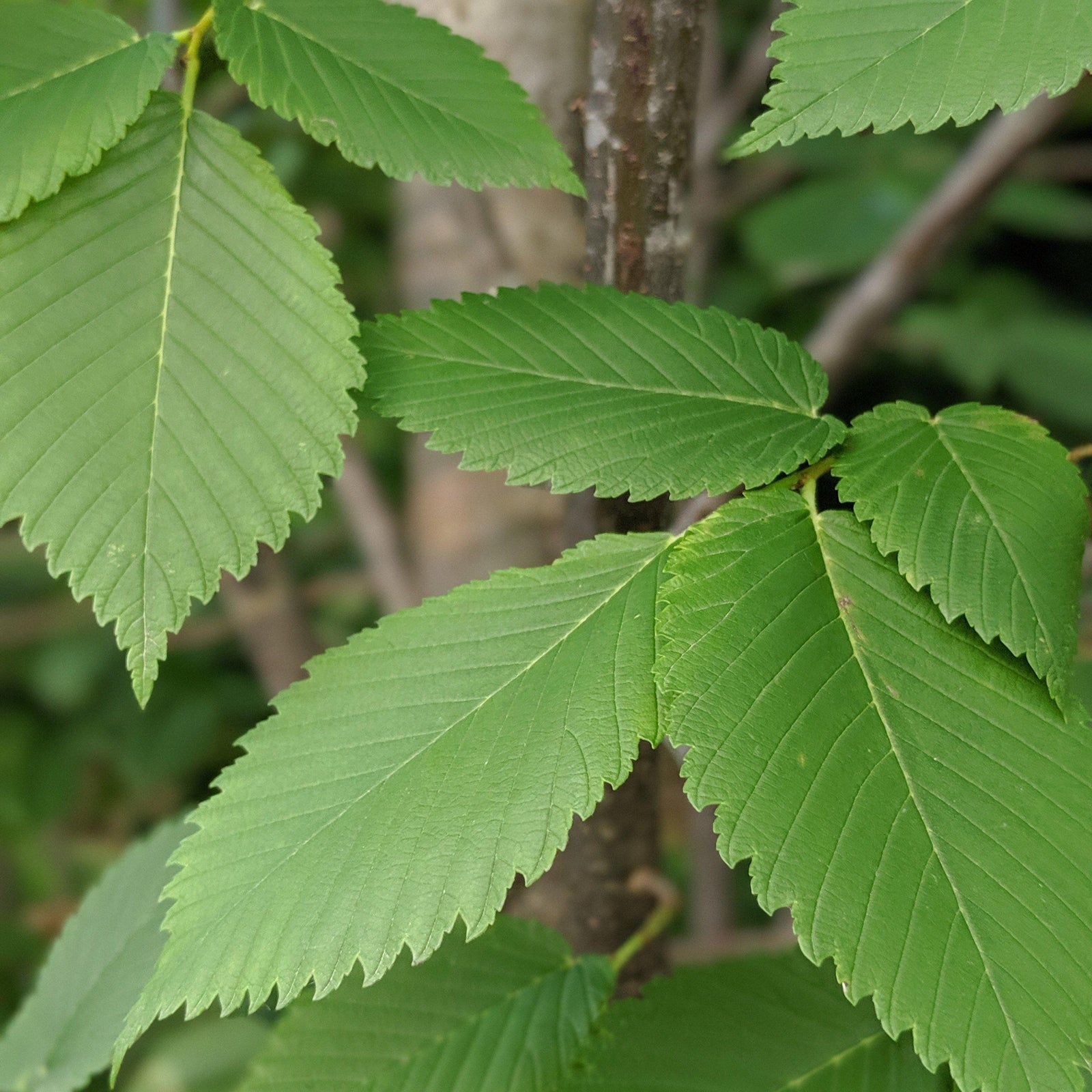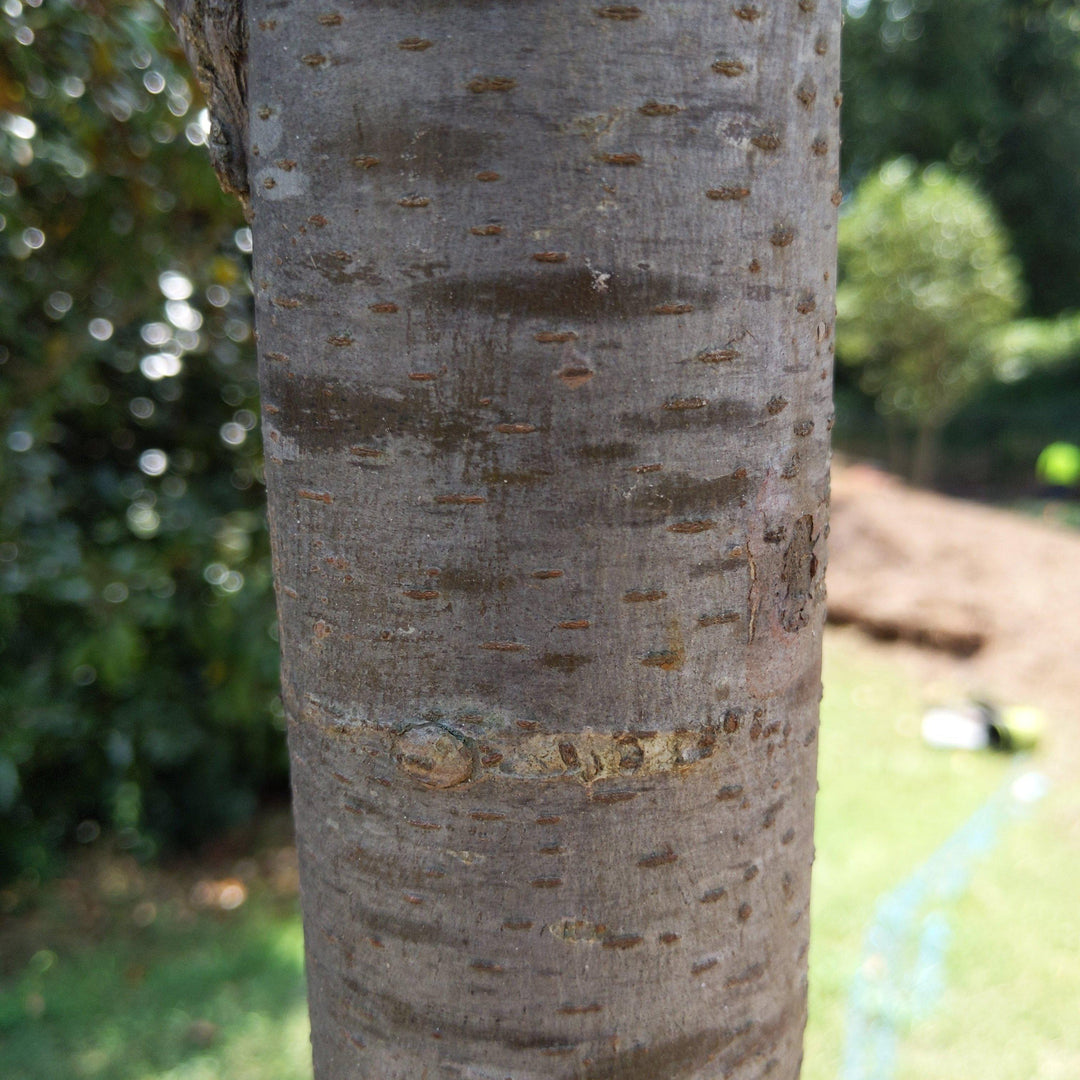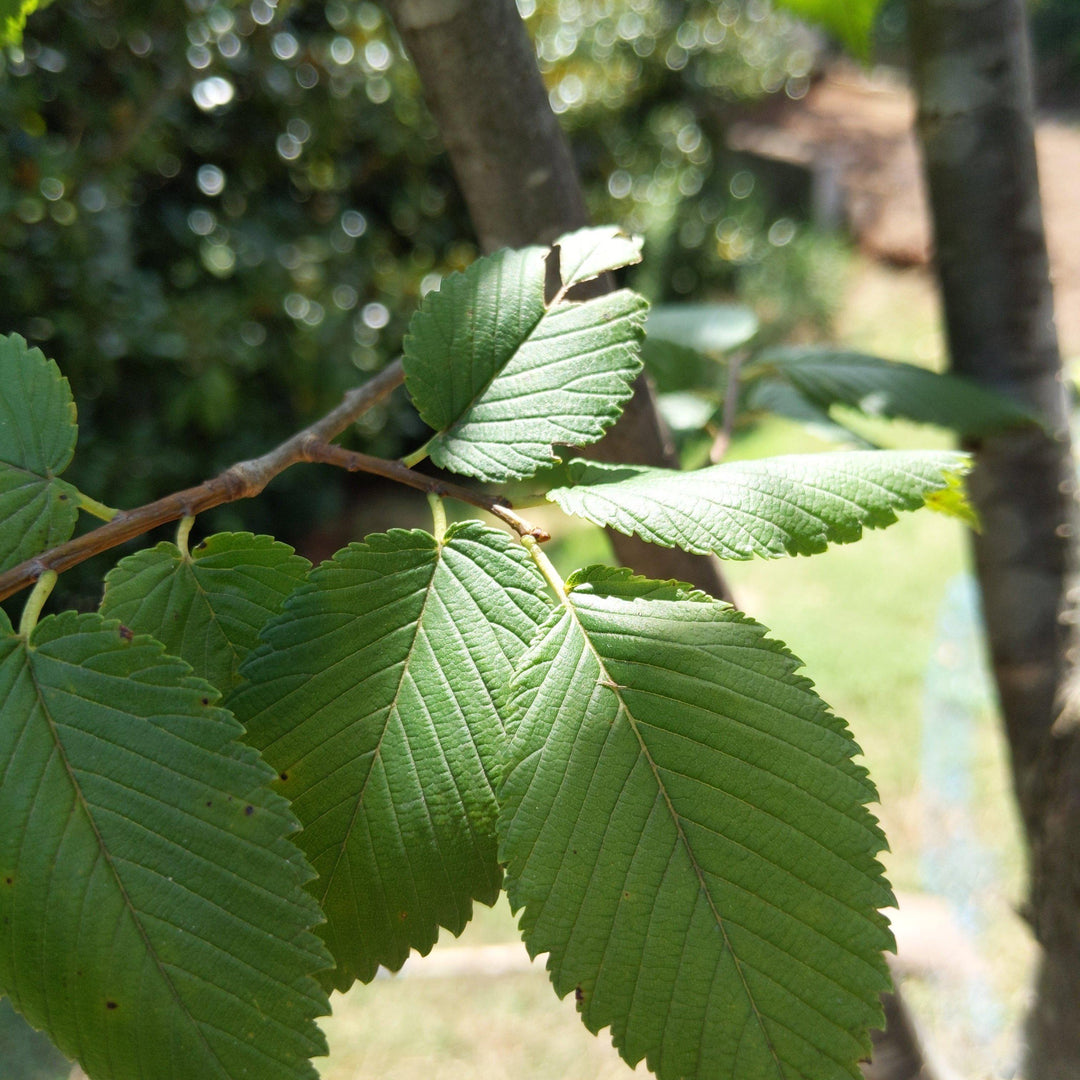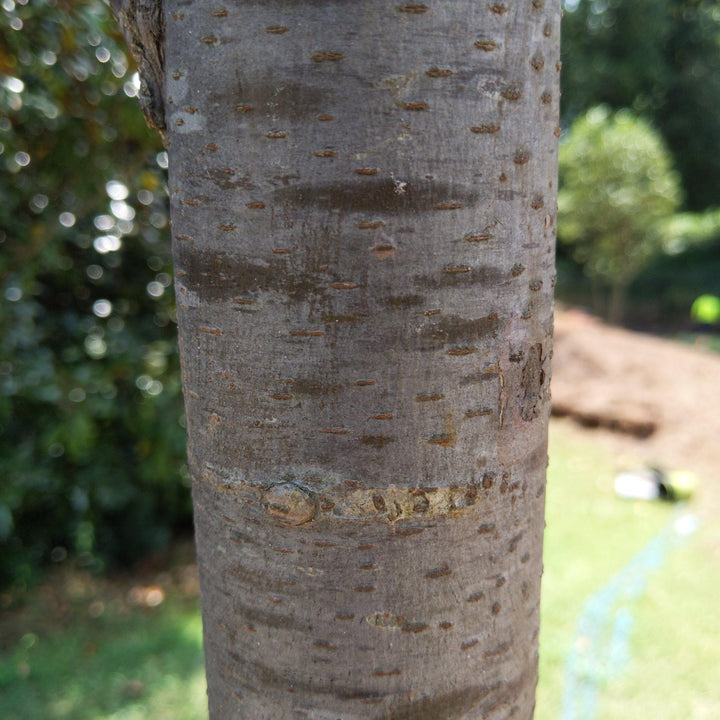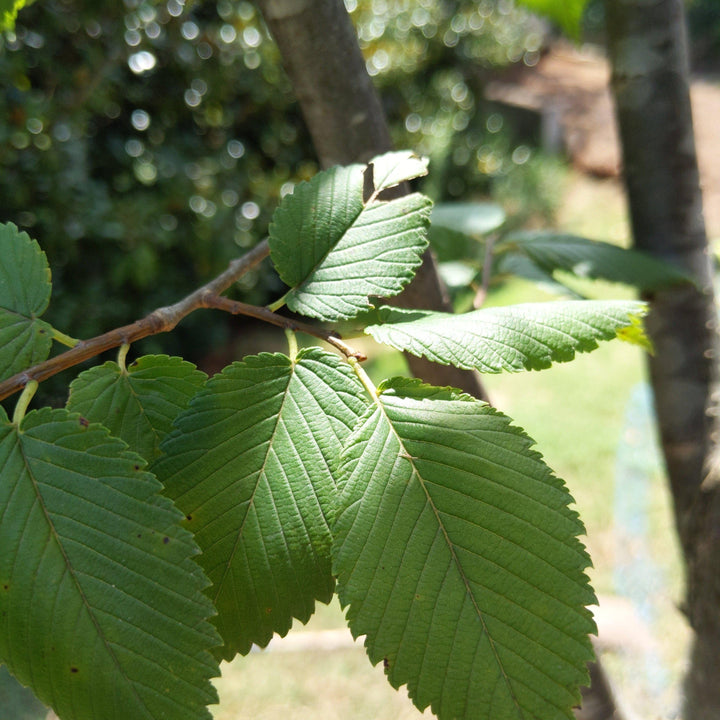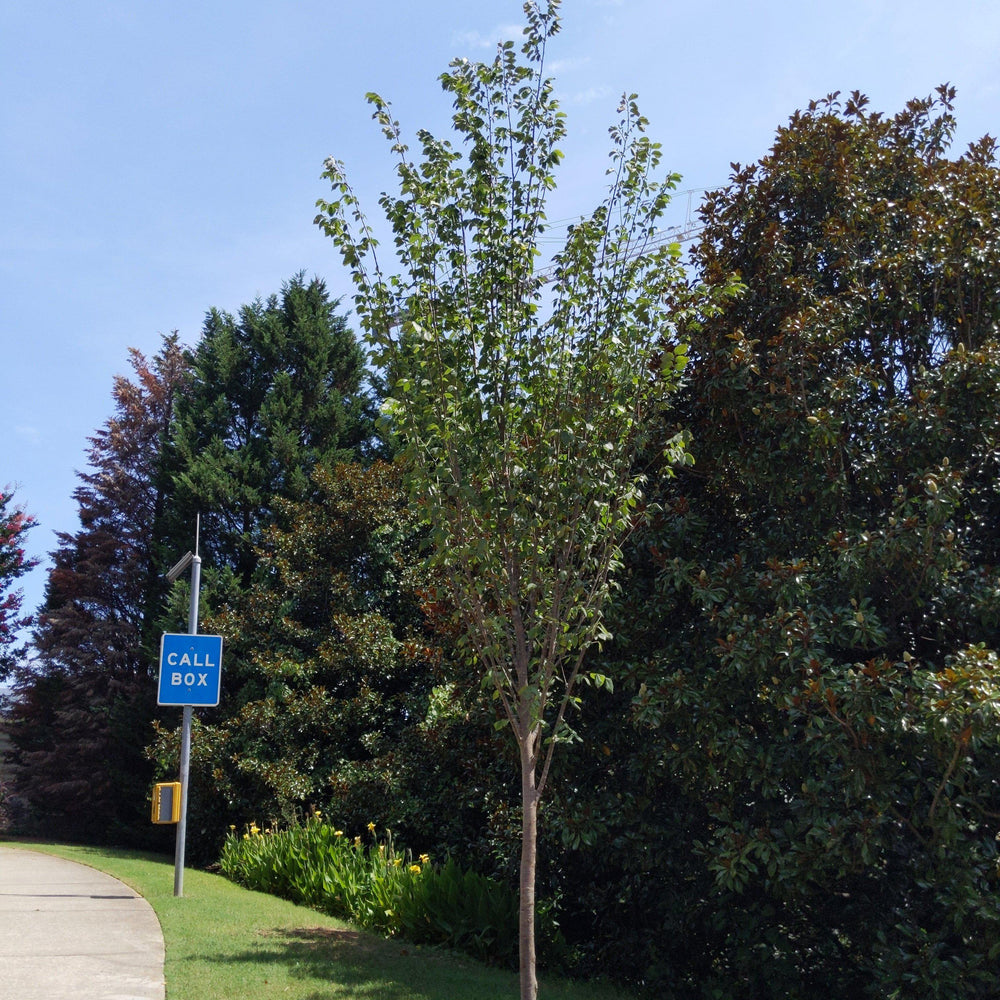Princeton American Elm is a tall native vase-shaped deciduous tree with a broad rounded crown. The large rough dark green leaves are toothed with asymmetrical bases and turn an undistinguished yellow in fall. Inconspicuous green flowers bloom in spring before the foliage and give way to papery wing-like seed pods that mature mid-spring. Grows best with full sun and rich well-drained soils. Princeton has excellent resistance to Dutch Elm disease. Can tolerate both dry and wet sites
|
Type: |
|
|
Origins: |
Eastern N. America; GA Native |
|
Height: |
50’ - 70’ |
|
Spread: |
30’ - 50’ |
|
Spacing: |
40’ |
|
USDA Hardiness Zone: |
3 - 9 |
|
Culture: |
|
|
Bloom Color: |
Green |
|
Season of Interest: |
Spring, Fall |
MAINTENANCE NEEDS: Low Maintenance. Elms are susceptible to phloem necrosis and wetwood. Other potential issues include wilts, rots, canker, leaf spots as well as pests such as miners, borers, and scale.
LANDSCAPE USES: Accents or Group Plantings, Borders, Woodland Gardens, Rock Gardens, Ponds and Streams, and Shade Tree.
COMPANION PLANTS: Eastern Redbud, Dogwood, Musclewood


